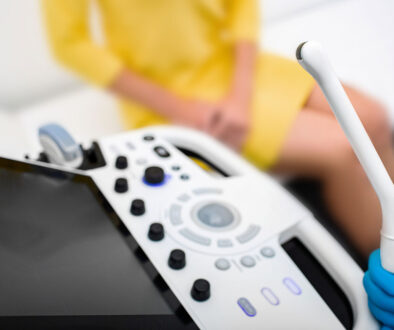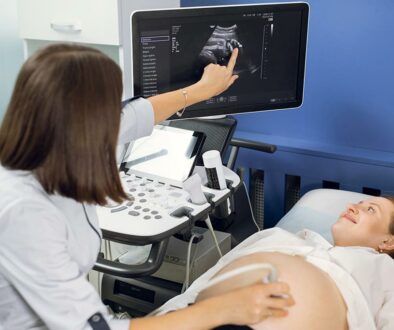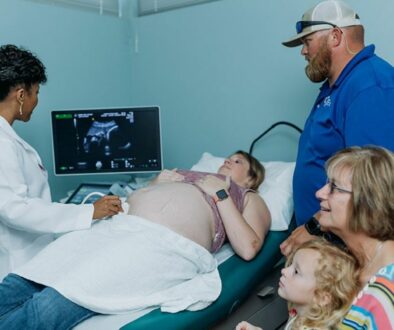When Would You Need These Common Types of Ultrasounds?
Whether you’re expecting a baby, or you need vital medical information, the various types of ultrasounds can give answers. Due to this non-invasive technique, we can discover fibroids, discover the source of heavy periods, and even evaluate tumors or cysts.
We’ll take a closer look at the most common types of ultrasounds and when you would need each one.
What Are The Common Types of Ultrasounds?
Each type of ultrasound is specifically designed to diagnose certain medical conditions. In some cases, the ultrasound involves moving a transducer over the area to be examined. A transducer is a small device that sends sound waves into your body. In others, a probe may be inserted to gain a better image of certain areas (such as a transvaginal ultrasound.)
Essentially, there are two main types of ultrasounds: 2D and 3D.
How Does an Ultrasound Work?
A 2D or 3D ultrasound works by sending sound waves from a transducer to the part of your body that needs to be examined. These sound waves “bounce back.” As a result, it provides images of organs and tissues. We use those images to diagnose and treat conditions.
Ultrasounds do not use radiation, therefore, they are also used to provide images of your baby in your womb. This technology allows you to have a first look at your child.
Next, we’ll take a closer look at each type of ultrasound.
Traditional Ultrasounds: 2D
2D ultrasounds, also known as traditional or grayscale ultrasounds, are perhaps the most recognizable form of ultrasound imaging. They produce two-dimensional, black-and-white images. These offer valuable insights into the structure and position of organs and tissues.
This type of ultrasound is commonly used during pregnancy to monitor fetal development. However, it can also be used in assessing organs such as the liver, kidneys, and uterus.
3D Ultrasound: More Detailed Images
3D ultrasounds take imaging a step further by creating three-dimensional images of the target area. This type of ultrasound provides a more detailed view of the organs and tissues, offering depth and contour information.
3D ultrasounds are particularly useful in obstetrics, where they can provide our patients with lifelike images of their developing babies. They are also employed in various medical specialties to evaluate organ abnormalities and guide certain procedures.
Gynecological Conditions That Can Be Discovered With an Ultrasound
Some of the gynecological conditions that can be diagnosed with an ultrasound include:
- Cysts
- Fibroids
- Any masses in the pelvic area
- Pelvic Inflammatory Disease (PID)
- The source of abnormal vaginal bleeding
What’s the Difference Between a Sonogram and an Ultrasound?
These terms are used interchangeably, but they do have distinct meanings.
An ultrasound refers to the actual imaging technique that uses high-frequency sound waves to create images of internal body structures.
A sonogram, on the other hand, refers to the resulting image or picture produced by the ultrasound machine. It is the visual representation of the sound waves’ echoes and provides valuable information for medical diagnosis and monitoring.
Myths About Ultrasounds
Sadly, many are worried or hesitant to have an ultrasound because of the many myths that exist. We think it’s important that you know the truth about these common misconceptions:
MYTH: Ultrasounds use radiation
FACT: Ultrasounds create images using soundwaves.
MYTH: Ultrasounds can cause miscarriages.
FACT: There is no evidence to support this claim.
We’ve gone into greater detail about these and other myths in our previous article, “Don’t Believe These Myths About Ultrasounds.”
Associates in Women’s Healthcare: We Have the Types of Ultrasounds That Can Help Us Tailor a Treatment Plan for You
Both 2D and 3D ultrasound technology provide extensive imaging options that play a vital role in monitoring your health and the health of your growing baby.
The most common types of ultrasounds—2D and 3D—each bring unique advantages. They can monitor a developing fetus, guide a medical procedure or even help evaluate the health of your organs.
We’re pleased to offer the convenience of 2D and 3D ultrasounds in our office.
For decades, we’ve cared for patients at every stage of life, whether they’re starting a family or entering menopause. We understand the importance of treating you like an individual, and we promise we will always take the time to answer your questions.
We would consider it a privilege to be your medical home. Just contact us for an appointment.





